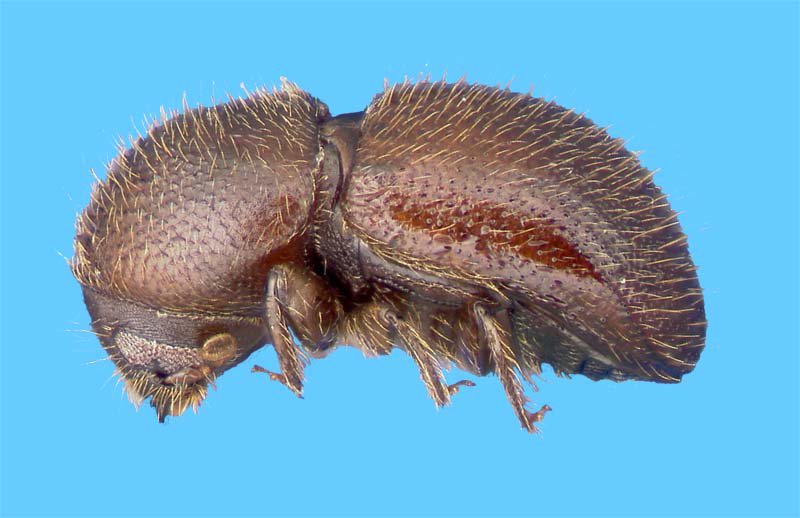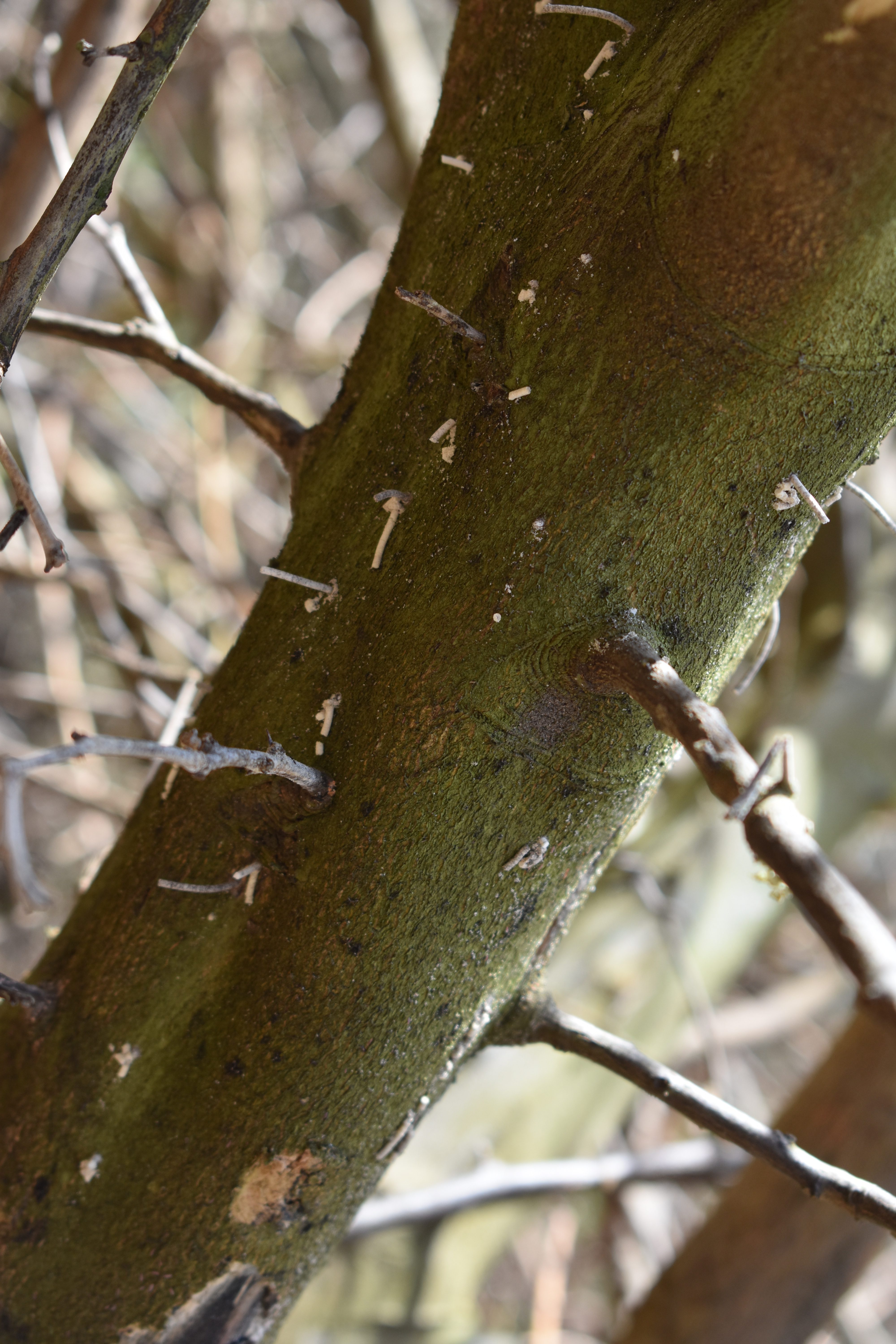Winter Storm Elliott brought freezing temperatures to the Panhandle on December 24th that lasted through December 28th, 2022. While we’ve seen freezing temperatures in years past, none remained below freezing for as long as Winter Storm Elliott did, resulting in significant injury to citrus in our region. Those trees that received significant freeze damage are more vulnerable to pests and diseases. One such pest we are seeing as a result of Winter Storm Elliott, are ambrosia beetles.

Ambrosia beetles are a group of wood-boring insects that live in dead or severely stressed trees or dead wood. They are attracted to the odor that the dead/dying trees give off, which is why you may be seeing them now in freeze damaged citrus trees. Once they locate a sick tree, they bore into the lower part of the tree (about 2-3 feet from the ground), creating a tunnel or a gallery. You’ll likely notice sawdust from the galleries at the base of the tree or you may notice a toothpick like protrusion of sawdust at the base of the gallery.

Several species of ambrosia beetles are considered true pests that attack living trees, but most species are secondary to another issue. Because ambrosia beetles generally prefer dead or dying trees, they are not typically a problem for citrus trees. If you are seeing signs of ambrosia beetles on your trees, the beetles are likely targeting trees that sustained major freeze damage from Winter Storm Elliott.
Unfortunately, there are no effective strategies to control ambrosia beetles once they attack a tree, so the best line of defense is to keep your trees healthy. Consider the first three UF/IFAS Florida-Friendly Landscape principles for maintaining tree health:
#1 Right Plant, Right Place: Select plants that match the site’s soil, light, water, and climatic conditions. Plants that are well adapted for our region will be lower maintenance and have a better chance of flourishing as opposed to those that aren’t. For information on citrus varieties adapted for our region, please visit: UF/IFAS Evaluating Cold-Hardy Citrus Varieties for the Panhandle | Panhandle Agriculture (ufl.edu)
#2 Water Efficiently and #3 Fertilize Appropriately: Proper irrigation and fertilization enhances plant growth. Over watering or over fertilizing can do more harm than good so it is best to follow UF/IFAS recommendation rates and application timing.
For more information, please visit:
- Ask IFAS: Ambrosia Beetles (ufl.edu)
- Florida-Friendly Landscaping™ Program – University of Florida, Institute of Food and Agricultural Sciences – UF/IFAS (ufl.edu)
- Explore Blackberry Production at the 2025 Blackberry Field Day - June 5, 2025
- Barefoot Beware: Lawn Burweed! - April 21, 2025
- The Good Guys: Beneficial Insects in Your Garden - March 13, 2025
